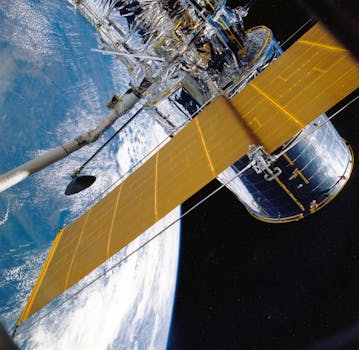Navigating the Skies: Insights into Recent Satellite Telecommunications Innovations

Navigating the Skies: Insights into Recent Satellite Telecommunications Innovations
Satellite telecommunications have come a long way since their inception, and recent innovations have transformed the industry. The focus keyword Satellite Telecommunications is at the forefront of this revolution, enabling faster, more reliable, and widespread connectivity. In this article, we will delve into the recent advancements in satellite telecommunications and their implications for the future.
Introduction to Satellite Telecommunications
Satellite telecommunications involve the use of satellites to transmit and receive signals, facilitating communication between different locations on Earth. This technology has been instrumental in providing connectivity to remote and underserved areas, where traditional communication infrastructure is lacking. The latest innovations in satellite telecommunications have focused on improving the speed, capacity, and efficiency of these systems.
One of the significant advancements in satellite telecommunications is the development of High-Throughput Satellites (HTS). These satellites are designed to provide high-speed internet connectivity, with capacities ranging from hundreds of gigabits to several terabits per second. HTS have enabled the widespread adoption of satellite-based broadband services, catering to the growing demand for high-speed internet access.
Recent Innovations in Satellite Telecommunications
Several recent innovations have contributed to the growth and development of satellite telecommunications. Some of the notable advancements include the launch of Low Earth Orbit (LEO) satellites, which offer lower latency and higher speeds compared to traditional Geostationary Orbit (GEO) satellites. LEO satellites are being used to provide broadband services, as well as to support the development of the Internet of Things (IoT) and other emerging applications.
Another significant innovation is the development of advanced antenna technologies, which enable the creation of smaller, more efficient, and higher-gain antennas. These antennas are crucial for improving the performance of satellite telecommunications systems, allowing for faster data transfer rates and more reliable connections.
The integration of artificial intelligence (AI) and machine learning (ML) algorithms into satellite telecommunications systems is also an area of ongoing research and development. AI and ML can be used to optimize satellite operations, predict and prevent errors, and improve the overall efficiency of the system.
Impact and Future of Satellite Telecommunications
The recent innovations in satellite telecommunications have far-reaching implications for the industry and society as a whole. The increased availability of high-speed internet access, enabled by satellite telecommunications, has the potential to bridge the digital divide and promote economic growth in underserved regions.
The growth of satellite telecommunications is also expected to drive the development of new applications and services, such as remote sensing and Earth observation. These services can provide valuable insights into environmental monitoring, disaster response, and resource management, among other areas.
However, the future of satellite telecommunications also poses challenges, such as the need for spectrum management and regulatory frameworks. The increasing number of satellites in orbit requires careful management to prevent interference and ensure the sustainability of the satellite telecommunications ecosystem.
Conclusion
In conclusion, the recent innovations in satellite telecommunications have transformed the industry, enabling faster, more reliable, and widespread connectivity. As the demand for high-speed internet access continues to grow, satellite telecommunications are poised to play an increasingly important role in meeting this demand. The integration of advanced technologies, such as AI and ML, will be crucial for optimizing satellite operations and improving the overall efficiency of the system.
As we look to the future, it is essential to address the challenges associated with the growth of satellite telecommunications, including spectrum management and regulatory frameworks. By doing so, we can ensure the long-term sustainability of the satellite telecommunications ecosystem and promote the continued development of this vital industry.






